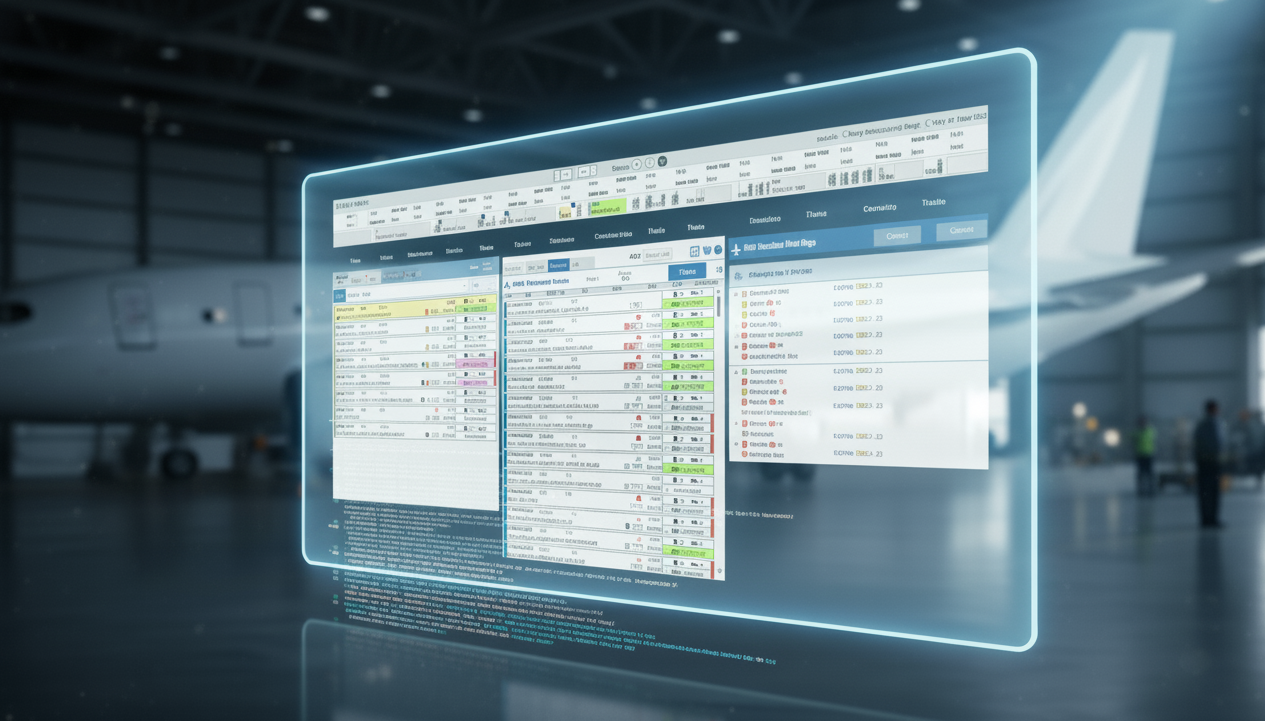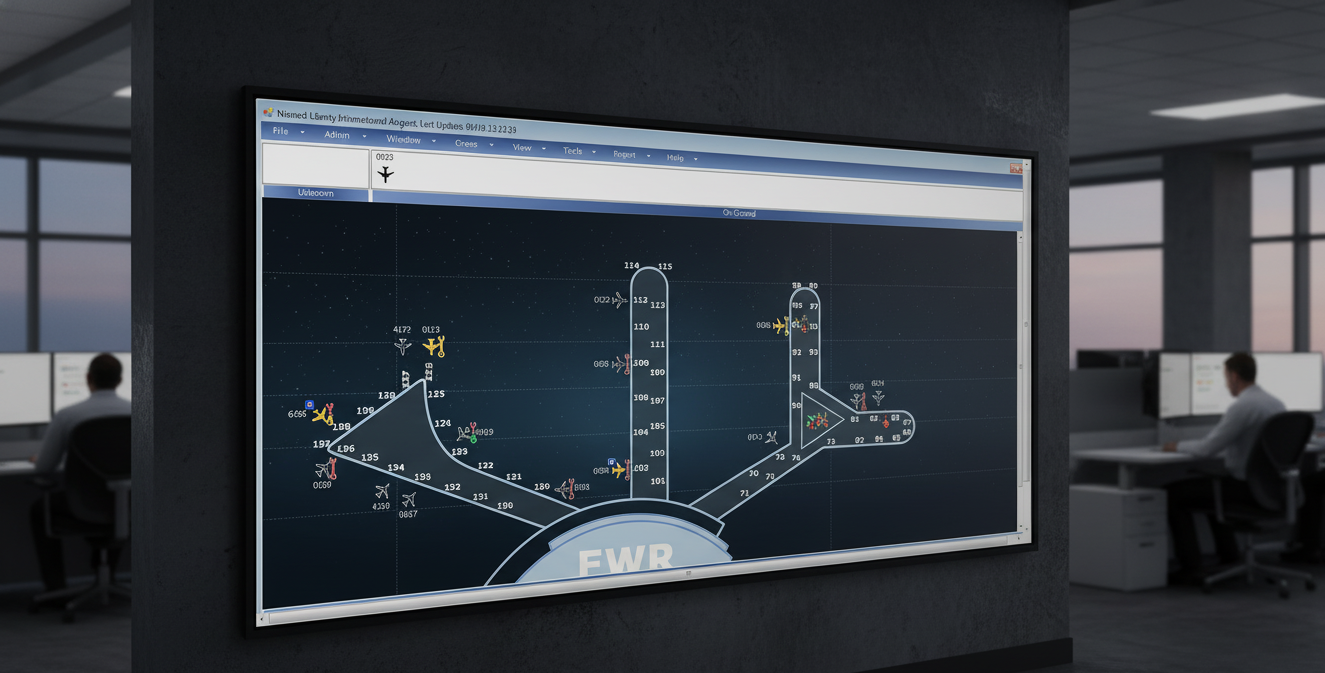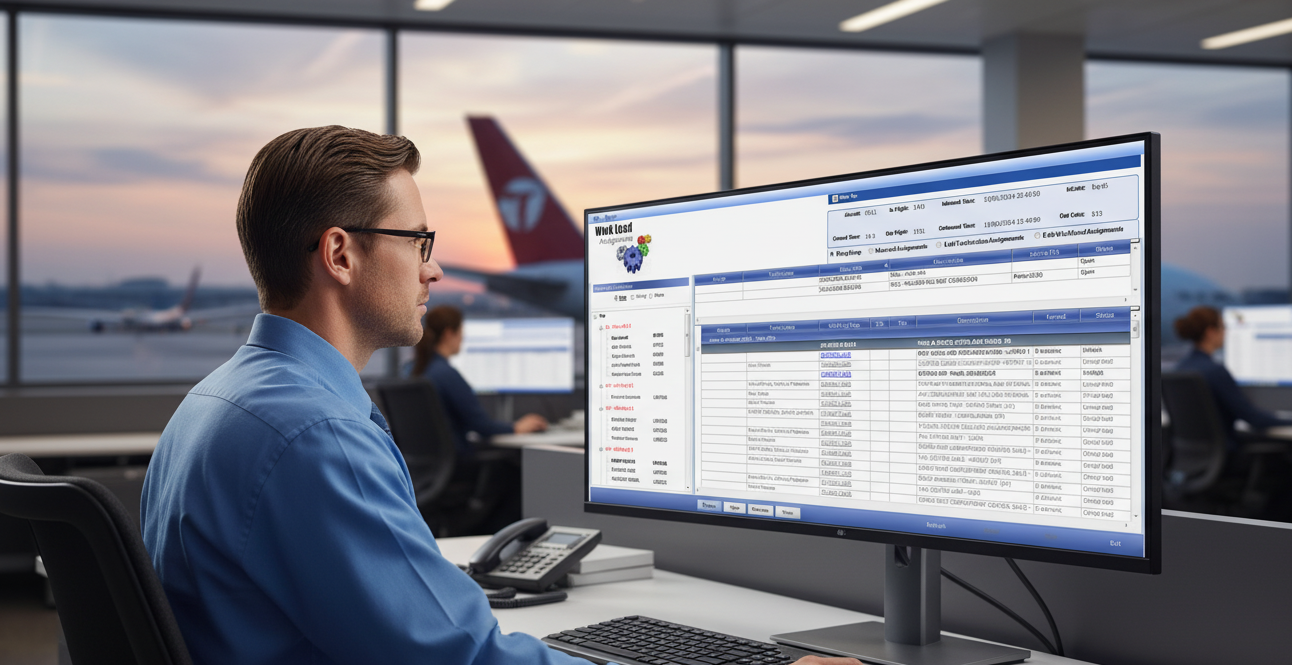AMTS (Automated Maintenance Tool Suite)
This project was a comprehensive strategic overhaul of maintenance planning operations. The primary goal was to replace a fragmented environment that relied on multiple systems and "green screen" legacy interactions with a single, unified platform. This new platform was designed to support a single, standardized way of working, ensuring a consistent user experience. Key outcomes included normalizing workload assignments, supporting mobile execution, enriching workload monitoring to identify delay factors, and improving data capture at the point of entry.
This initiative is a classic and critical example of legacy system modernization in the airline industry. Airlines are actively moving away from decades-old, text-based "green screen" systems (like SCEPTRE) which are costly to maintain, difficult to integrate, and require specialized knowledge. AMTS represents a move to a modern, unified Maintenance, Repair, and Overhaul (MRO) platform. By supporting mobile execution and standardizing workflows, this project directly addresses the industry-wide push for a more mobile, agile, and data-driven workforce.
Auto Scheduler
The Auto Scheduler project was a data-driven initiative focused on automating the evaluation, forecasting, and creation of work packages for maintenance tasks. The first phase specifically targeted highly repetitive tasks, which accounted for 40% of all work scheduled by planners. By automating these mundane decisions, the project's goal was to free up planners to focus on more complex, high-value scheduling. A successful Proof of Concept (POC) validated a Configurable Rules Engine, which is expected to improve labor utilization and program execution efficiency.
This project is at the forefront of automation and optimization in maintenance planning. The "Configurable Rules Engine" is a key technology that allows airlines to codify complex business and labor rules, moving from manual to automated scheduling. This directly supports the industry's goal of improving "turn-around time" (TAT) and maximizing aircraft availability. By automating routine work, the system allows human planners to manage by exception, a core tenet of modern operational control.
EBS (Electronic Bidding System)
This project delivered a complete, secure, and user-friendly digital solution for the complex process of shift bidding. It was designed to improve efficiency, reduce administrative overhead, and promote online bidding. Key features include HR data import, automated bid timeline calculation, email notifications, and bidder management. The outcome was a major success, as it reduced administrative overhead by eliminating manual data entry and significantly shortened the bid process at Hub stations. Crucially, it facilitated the use of technicians' iPads, enabling them to bid from home, all while maintaining strict adherence to union contract rules.
EBS is a prime example of digital transformation and workforce mobility. Maintenance operations are 24/7 and heavily unionized, making bidding a complex, paper-intensive, and time-consuming administrative burden. By digitizing this entire workflow and making it accessible on technicians' iPads, the project untethered employees from a physical location. This empowers the workforce, reduces costly administrative errors, and demonstrates a successful partnership between digital innovation and strict union rule compliance, a critical balance in the airline industry.
Concourse Manager
The Concourse Manager project delivered an industry-leading application for managing maintenance operations, built on three key principles: visual overview, assignments, and workload status. It provided intuitive interfaces and dashboards to give users a clear "visual overview" and real-time visibility into the state of operations. This allowed for clear task assignments and the ability to track progress and identify bottlenecks, ultimately improving productivity and reducing delays.
This project addresses the critical need for real-time operational awareness and data visualization. A modern airline concourse or maintenance hangar is a highly complex environment with thousands of moving parts. "Concourse Manager" acts as a digital "command center" or "digital twin" of the operation. By replacing whiteboards and paper reports with real-time dashboards, it provides a single source of truth. This allows managers to make informed, proactive decisions about resource allocation and task prioritization instead of reacting to problems, which is a fundamental goal of all modern MRO and operational platforms.
AASP (Aircraft Appearance Services Portal)
AASP was a project to replace an outdated application with a modern, user-friendly platform for managing aircraft appearance services like washes and carpet cleaning. The new application was designed to be compatible with vendor-provided mobile devices and industry-standard browsers. The project leveraged an Amazon Web Services (AWS) cloud solution for scalability and reliability. The result was a successful deployment that led to a 32 percent increase in compliance with required tasks within their prescribed time frames.
Industry Relevance: This project highlights two key industry trends: cloud adoption and mobility. By building on AWS, the application avoids the limitations of on-premise hardware and gains scalability—a standard for modern enterprise apps. Designing for mobile devices is critical for an on-the-move workforce that performs tasks on the aircraft, not at a desk. The 32% increase in compliance is a powerful metric that demonstrates the business value of good UX and mobile-first design, directly impacting operational quality and brand standards.
TAM (TOCS Alert Manager)
The TAM project was created to solve the problem of "alert fatigue" from the existing TOCS 1.0 application. It provided a non-intrusive tool that consolidates inputs from multiple applications into a single source for alerts. This new system enabled a strategic shift to exception-based monitoring, allowing users to focus only on high-priority issues. It also included user-based preference settings so users could customize alerts and focus on role-based issues that required their specific attention.
This project is a sophisticated example of applying Human Factors principles to software design. "Alert fatigue" is a serious industry-wide problem where users are so inundated with notifications that they begin to ignore them, leading to missed critical events. By consolidating alerts and, most importantly, enabling a shift to exception-based monitoring, TAM directly combats this. It ensures that when an alert does appear, it is relevant and actionable. This philosophy of managing by exception is a best practice in high-stakes environments like aviation, as it reduces cognitive load on users and allows them to focus their expertise where it's needed most.






